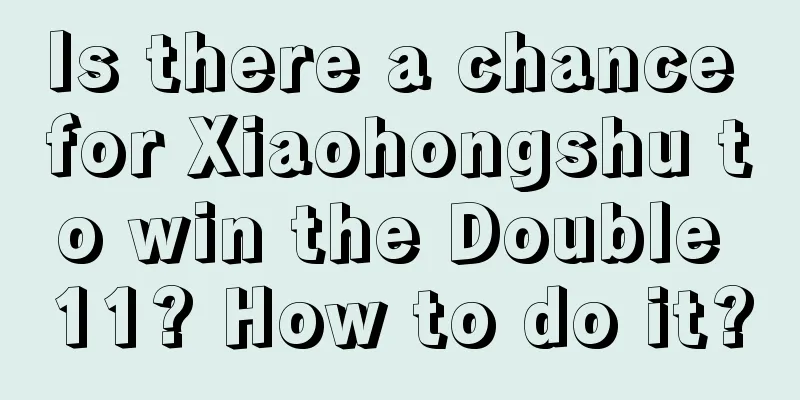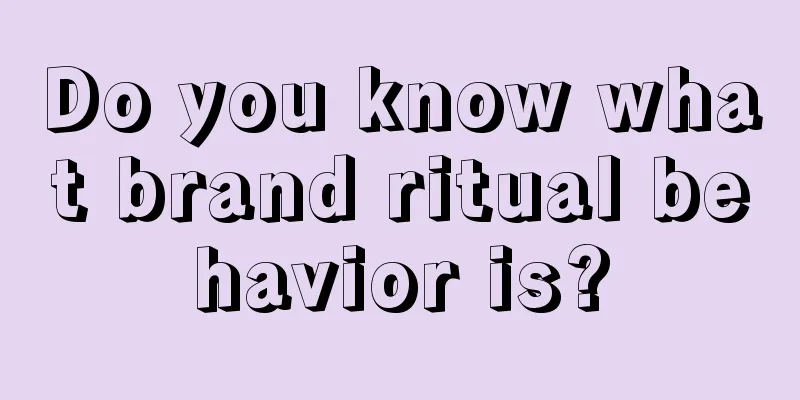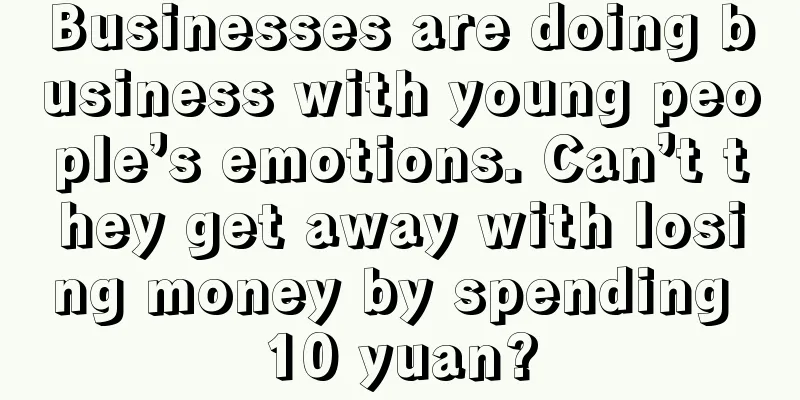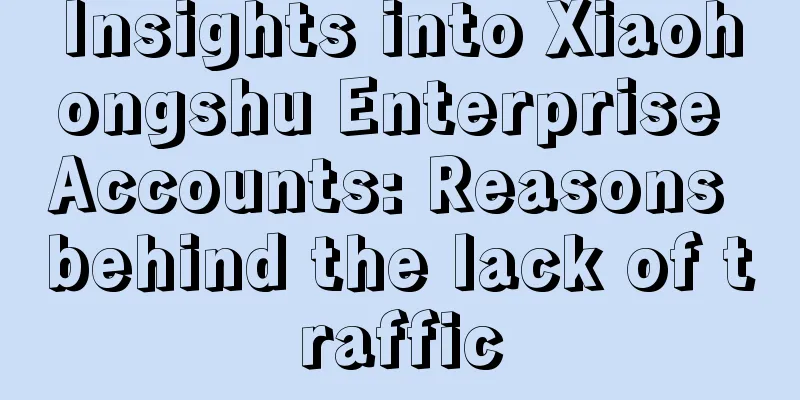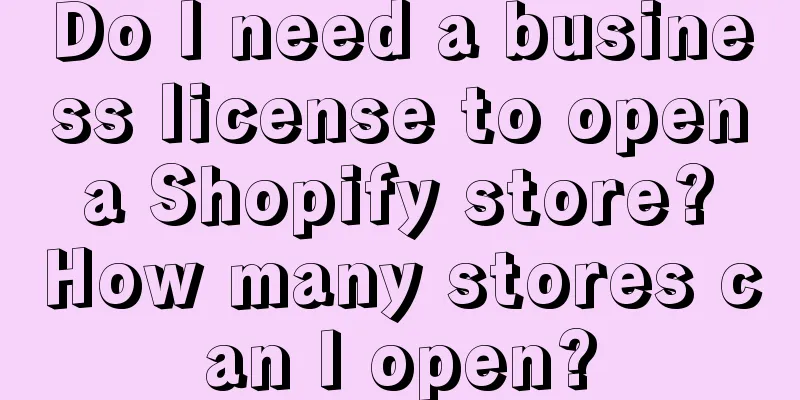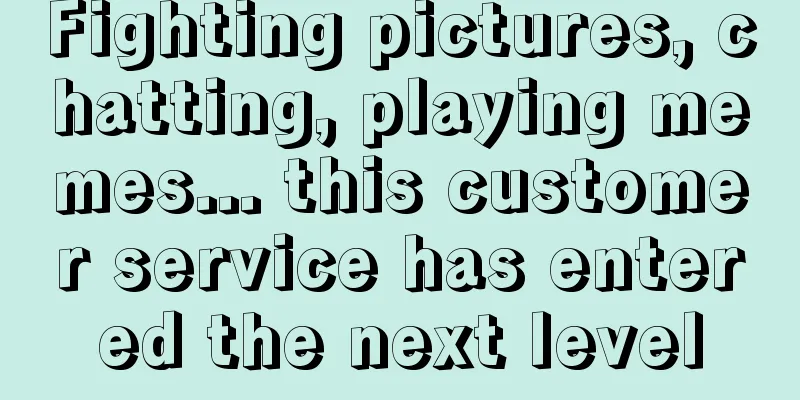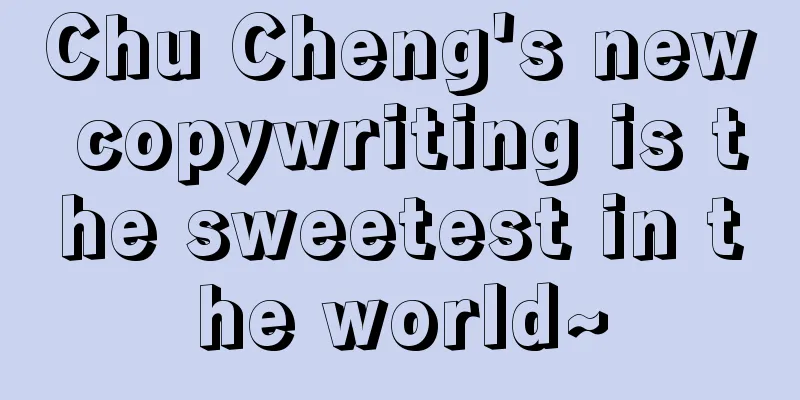Have brands fully understood the secret of "dopamine marketing"?
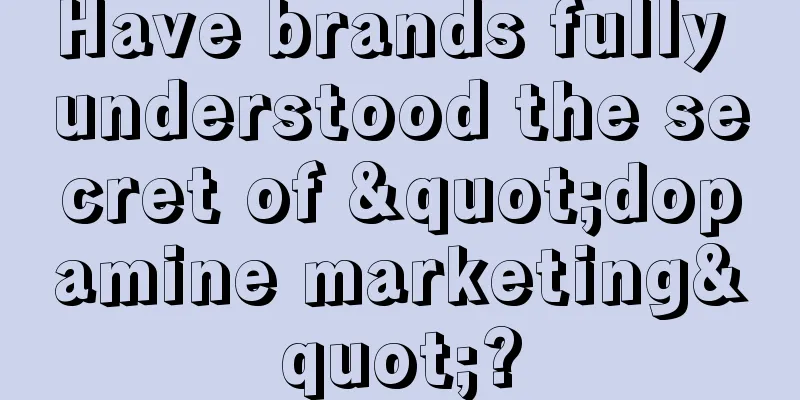
This summer, dopamine marketing has captured the attention of young people. With the arrival of hot summer, a brand marketing method based on color has suddenly become popular. The bright, highly saturated colors stir the restless hearts of young people. Its naming method also has the characteristics of Internet culture - dopamine. As a hormone secreted by the brain, dopamine affects a person's emotions and judgment. It makes people feel happy, excited, and other emotions. The happiness from dopamine is spreading rapidly in the consumer field. The most typical example is "dopamine wear". On Xiaohongshu, a consumer trend, the #dopamine wear topic has been viewed more than 220 million times, with more than 2.98 million related notes. Celebrities and Internet celebrities also continue to use this keyword to grab traffic for themselves. Screenshot of Xiaohongshu On the more universal national platform, "dopamine" has also demonstrated its magical power. On the WeChat index, the number of search terms related to "dopamine" has basically remained above 60 million in the past month, with the highest exceeding 100 million. The Douyin topic has also reached a playback volume of tens of billions. Behind the surge in attention is the fact that brands and marketers are flocking to the word "dopamine". Why is dopamine so popular? How long can its popularity last? As various brands are trying their best to get close to "dopamine", is it worth getting on board in time? What are the precautions? 1. The secret of the “dopamine” explosion"Dopamine" marketing is essentially a kind of intuitive marketing. Intuitive marketing means you can understand it at a glance. For example, Perfect Diary uses the theme #Dopamine Girl# and launches four summer makeup combinations of blue, pink, purple and orange for vacations, workplaces, music festivals, parties and other scenarios. The boldness conveyed by the colors and copywriting can make consumers instantly understand the characteristics of dopamine makeup. All marketing is a game of psychology. In the groundbreaking book Thinking, Fast and Slow, Nobel Prize winner Daniel Kahneman divides human thinking into two systems: System 1 is intuitive thinking, which is a quick decision-making system, equivalent to the human brain's autopilot, and is the emotional brain; System 2 is computational thinking, which is a slow role, and the brain needs to carefully calculate and weigh the pros and cons, and is the rational brain. In brand marketing, intuitive marketing that mobilizes the emotional brain is the basic operation, because consumption is essentially an impulse. Once consumers start to think, their shopping impulse will continue to decline. Therefore, how to shorten the decision-making path is one of the ultimate pursuits of all brands. Don't make me think is the golden rule of the industry. In today's increasingly fast-paced world, intuitive marketing is also accelerating. Dopamine marketing is a representative of extreme speed because it mobilizes people's physiological pleasure and directly arouses consumers' emotions such as pleasure, excitement, and satisfaction through hormonal stimulation of dopamine neurons. Compared with the subconscious cultural genes, it is more superficial, fast, and universal. For example, in the catering industry, where dopamine marketing is concentrated, especially fast-moving consumer goods such as coffee and milk tea, in hot summer weather, they can quickly mobilize consumers' physical desires and achieve what you see is what you get and quench your thirst as soon as you drink. Brands such as Luckin Coffee, Kudi, Cha Baidao, Coco, and Blueglass have all launched new dopamine products, and the sales boost they bring is also very intuitive. Luckin's new "dopamine" product To match the new products, Luckin Coffee and other beverages have expanded their "dopamine" to the surrounding areas. On Xiaohongshu, photos of Luckin Coffee's colorful summer artist-branded paper bags can be seen everywhere... What is more worthy of reflection is that the color marketing represented by dopamine has always existed. Why is it so popular this summer? The reason behind this is actually related to the specific environment of the times. The depression brought about by the three-year epidemic, the doubling of pressure in current life and work, and the uncertain future have all caused negative emotions such as anxiety and depression to continue to spread. Especially for young people who are optimistic by nature, they need an emotional outlet. The instant gratification represented by dopamine is more in line with the current theme, and all trends are driven by the emotions of the times. If the low-saturation colors popular in previous years represent calmness, low-key and high-end, then the high-saturation colors of dopamine marketing are full of publicity, brightness and cheerfulness. Karen Pine, a famous fashion psychology professor, once said in a research report that "relatively cheerful colors can stimulate people's positive emotions to a greater extent." Behind the abandonment of "black, white and gray" and the embrace of "red, yellow and green" is actually a change in the mentality of young people. They no longer want to pretend to be a mature adult, but want to completely release the boy in their hearts. After all, the delayed gratification of "endorphins" is still far away, but the instant gratification of "dopamine" is right around the corner. 2. Can dopamine go from “suddenly popular” to “long-lasting popular”?All marketing is a double-edged sword, and dopamine is no exception. As the ultimate speed representative of intuitive marketing, dopamine marketing has the following two typical advantages: First, create a "first glance effect" through visual stunts. The "first sight effect" is a common social psychological phenomenon. It was first proposed by American social sales psychologist Latane. It means that both parties decide whether there is a need for further communication based on the impression left by the first meeting. In fact, it refers to "eye contact". In the marketing world, "eye contact" is equally important because the first impression is often very vivid and solid, and it determines the consumer's favorability towards the product to a certain extent. In today's extremely fragmented era, it is increasingly difficult to leave an impression on consumers. The first three seconds of a short video on Douyin determine the life or death of the video. The same is true for brands to grab consumers' attention at first glance. The bright and bold colors of dopamine have an extremely strong visual impact and can instantly stimulate and release consumers' desire to buy. Second, by providing emotional value, we tap into the “self-pleasing culture”. The popularity of emotional value lies in two major trends of the times: one is the "self-pleasing culture" that is popular among young people. Compared with their predecessors who were influenced by collective culture, the new generation of young people have stronger self-awareness and pay more attention to their inner feelings; the other is the rise of feminism and "her economy". Women's emotional qualities are further amplified, which constantly justifies the value of emotions. A major characteristic of dopamine marketing is that it stimulates emotions . In an environment of generally high pressure and fast pace, it delivers optimistic, positive and positive emotional values. The pleasure it provides to consumers is clear and immediate. Whether from the perspective of reducing "internal friction" or opposing "involution", it can quickly convey the emotional theme of "happiness" to consumers, allowing young people to empathize with it and thus establish an emotional connection. PINO JELLY Taste Personality Test Series Figures "Instant gratification" is the core of dopamine marketing. This is its greatest advantage, but also its biggest hidden danger. In One Hundred Years of Solitude, Marquez said: "All the splendor in life must be repaid with loneliness in the end." Human emotions have cycles. Dopamine marketing interferes with people's inner self-regulation mechanism through strong external stimulation. The side effect is that happiness is short-lived. When consumers return to a rational state from the stimulation of impulsive consumption, they may fall into the regret of buying something. Ultimately , dopamine marketing only stimulates demand rather than truly solving pain points. It neither changes the nature of the product nor provides price discounts. It is more like a disguised promotional event marketing. Moreover, dopamine marketing is essentially still at the level of emotional marketing and has not penetrated into the texture of the brand . Its versatility also makes it closer to a public traffic pool and cannot be strongly bound to the original core of the brand. It is also difficult for consumers to be more impressed by a brand that uses dopamine marketing. Starbucks and Ele.me jointly send out "dopamine" clothing and peripherals In a sense, this is like the national trend in the past and the current outdoor trend. Everyone is trying to get traffic, or even worse than the two, because the national trend and outdoor trend are supported by more solid traditional culture and healthy needs, while the awakening of dopamine is still more at the superficial physiological level, so the added value it brings to the brand is even thinner. What is more worthy of attention is that although intuitive marketing is reaching its peak as the times accelerate, it is also showing signs of decline. Various signs indicate that the era of excessive consumerism is on the decline. Since the beginning of this year, the topic of young people saving money has been frequently reported by the media, and the pursuit of a minimalist lifestyle has continued to spread. At the same time, the new generation of young people who grew up in the commodity society, They are gradually becoming desensitized to marketing methods that use tricks. Although they value the emotional value of consumption, they will also question the cost-effectiveness of "whether it is worth it". After trying it out, how much repeat purchase effect can dopamine marketing stimulate? 3. Should we get involved in brand marketing?Through the above analysis, dopamine marketing has been basically broken down. So for brands that have not yet boarded the bandwagon, should they take advantage of this opportunity? The answer is that it would be a waste if you don’t borrow. There is no conflict between attracting traffic and building a brand, but you have to pay attention to the methods and approaches. First of all, everything is dopamine. Dopamine, as a hormone secreted by the brain, has an indiscriminate mass base. After all, no one does not want to be "happy". For brands, no matter which track they belong to, they can be associated with "dopamine". Do not limit yourself to the abstract concept of color marketing, but put it in more specific scenarios to allow the target group to empathize with it. There is nothing that cannot be done, only things that cannot be imagined. For example, Leader, a young home appliance brand under Haier, teamed up with the women's space column "100 Chinese Girls' Homes" to use the Z generation's diverse needs for home furnishings and the colorful dopamine theme of home furnishings to integrate its own small color-strip refrigerator into the colorful home scenes. For another example, in order to launch the new "raw coffee" series, Starbucks co-created the graduation season theme song "Give Me Wa" with Bzhan, linking the thirst-quenching and refreshing effect of "juice + raw coffee" with the graduates' desire for future life, using the graduation scene to resonate with young people, and conveying hope with high-brightness colors to fill life with energy. Secondly, use dopamine to create brand popularity tension. For old brands that have formed a fixed impression in the minds of the public, dopamine marketing can sometimes produce unexpected effects. For example, Swarovski has made a comeback in China with its "dopamine bracelets". This light luxury crystal accessories brand was once in a very embarrassing market situation, with neither quality brands nor cost-effectiveness. But this summer, Swarovski's Gema series changed its retro design to colorful candy colors and blingbling glitter, which immediately captured the hearts of dopamine girls and became the darling of the jewelry industry. By the way, the entire brand was affectionately called "Huazi". The once calm and old-fashioned black swan was injected with a new soul by the dopamine color, which formed a wonderful contrast charm and gave this once outdated brand a new lease of life. Swarovski "Dopamine Bracelet" Finally, as summarized in the previous article, the current dopamine marketing is more on the surface of emotional marketing, but not deep into the core of the brand, thus lacking sufficient vitality. Whether it can further release the brand power through the form of dopamine will also become a major issue to test the brand marketing skills. Author: Mu Yu Source: WeChat public account "YIFAN" |
<<: The cost of advertising on Xiaohongshu is getting higher and higher? How to manage traffic?
>>: Taking "Bai Xiao T" as an example, briefly analyzing the logic of good business
Recommend
How to quickly layout and detonate the video account, this is the best answer
In this digital age, video accounts, as an emergin...
Mixue Ice City and Nongfu Spring enter the ice cup market, competing for the "ice cup +"
This article will explore the layout and strategie...
One video gained a million followers. Can Liu Yexi and others get the "ticket" to the Metaverse?
With the development of technology and the advent ...
How to design online marketing activities for bank WeChat to acquire customers
In the wave of digital transformation, how can ban...
What are the things to pay attention to when selling clothes in Shopee?
As one of the largest food delivery e-commerce pla...
The total number of online views exceeded 3 billion, and "scare yourself" swept the screen, controlling abstract netizens
In this era of information explosion and content b...
In the last week of 2023, the “offline Pinduoduo” kicked off the knockout round
"Price power" is undoubtedly a keyword i...
How often are Shopee's preferred sellers updated?
Many Shopee merchants want to become preferred sel...
2024 Consumption Outlook: More and More Need for “Cost Savings”
In 2023, a series of industry changes and new cons...
Which cross-border platform can receive funds on the same day? Introduction to the arrival time of cross-border platforms
There are many cross-border platforms now, because...
Brands, seize the dividends of small categories
This article focuses on branding strategies in the...
Sell out the brand
What is the secret of brand marketing? Can excelle...
Is Amazon FBM easy to do? How to reduce logistics costs by self-delivery?
Now many of you should be learning about Amazon FB...
Is it easy to work as an Amazon Japanese operator? What does the job involve?
It is not an easy task to operate an online store,...
How do eBay buyers cancel orders? Steps
Ebay is an international e-commerce platform that ...
